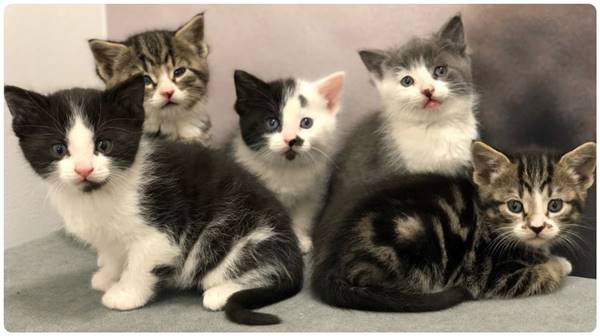A Guide to Cat’s Pregnancy: By Fayyaz Ashfaq
Having kittens is a very thrilling and emotive time for you and your cat. Formerly you can comfy packs of fur into your home, you need to know how to tell if your cat is expecting, and what you can do to certify her grandness is as happy as a possible.
I love my cat, and now days she is again expecting something good. Being human we understand little the process and challenges of women pregnancy till birth but for pet we just assumed that everything is going good. For to know those challenges with pet specially cat Yesterday, I was seated next to her and asking how are you and is everything is going good? But obviously I can’t able to understand her language. But in the same night she came were into my dream and start talking to me in my language, and I was too amazed to listen her as I really too much loved her from the depth of my heart. She was done a deeply and in the detail conversation with me about the feelings, challenges and processes of pregnancy with local cats.
According to her it’s vital to remember when forecasting to have kittens that your cat and her litter will have stressed that you will need to be prepared to grip. To help you support your pet all over her pregnancy and labor, I have enclosed everything you need to know about expectant cats. Much like us, we cat have stages of peak fruitfulness when they can become pregnant — this is known as being in season or in warmth. Cats can come into season about once every three weeks, so there are quite of opportunities for your pet to fall pregnant! Cat pregnancy normally lasts between 63 and 67 days, but it can be tough to know closely how long a cat is pregnant for.
The cat growth period can vary from as short as 61 days to as long as 72 days. We often won’t show any animal symptoms of pregnancy until few weeks. If you think that your cat is pregnant, take her to the vets for ratification. If you would like to know how to tell if a cat is pregnant yourself, there are numerous physical signs that you should be able to spot after two or three weeks have passed. After approximately 15-18 days of a pregnancy, you may notice that your pet’s nipples become enlarged and red — this is known as ‘pinking-up’. Similar to morning sickness in humans, your pregnant cat may go through a stage of vomiting. If you notice that her sickness becomes frequent, or she is at all unwell in any other way, contact your vet. Similar to morning sickness in humans, your pregnant cat may go through a stage of vomiting. If you notice that her sickness becomes frequent, or she is at all unwell in any other way, contact your vet.
A mum-to-be will slowly gain between 1-2 kg (subject on the number of kittens we are carrying) — this is a strong sign that she is pregnant. Cats tend to have an enlarged hunger later in their gestation, which will also subsidize towards her weight gain. An enlarged hunger could also be a sign of caterpillars or illness, so dual check with your vet to confirm. Your pregnant cat may act more parental, meaning that she rumbles more and seeks additional fuss and attention from you. Some vet practices can diagnose cat pregnancy using ultrasound, sometimes as early as 15 days into her term. The vet could also be capable to give you a sign of how many kittens your cat is having a baby by day 40 of her pregnancy. Bear in mind that in cat pregnancy, a larger kitten can unclear other smaller kittens in the womb .so you could have more kittens than estimated! Even though your cat should be more than capable of supervision labor herself, make sure that you are as prepared as she styles the end of her term. There are numerous signs to look out for that signal that the kittens are on their way.
If your cat wastes food, acts nervous and looks for a private place to settle down, it could be because her labor is due to start very soon. Your cat’s body hotness will drop to around 38 °C in the 12-24 hours before her labor starts. Accurate before giving birth, mum may become more vocal, appear nervous and want to wash herself repetitively. Delivery should start with strong abdominal reductions, followed by some discharge from her vagina. If the discharge is thick and dark, or blood-colored, then contact your vet. After this discharge, the kittens should follow very rapidly! Most catting labors go efficiently and you shouldn’t have to interfere. There are some signs however, such as dirty discharge and mum rinsing without creating kittens, which could suggest complications. If you notice either of these or have any other fears, contact your vet.
And in the last, she was surprised to me on sharing that, on those days she fully able to jump from wall to wall and window to window. We eat and drink everything’s as available from anywhere no needed of worried. We don’t need any types of scissoring for birth. We need only loves and moral medication instead of oral medication.













![Oil Marketing Companies [OMC] of Pakistan - An Academic Report](https://www.ravimagazine.com/wp-content/uploads/2015/04/pso-520x245.jpg)
